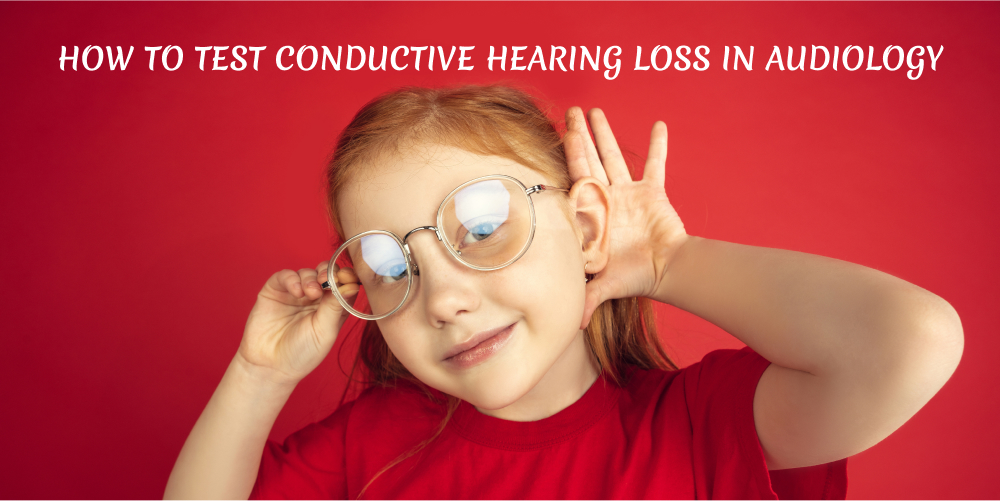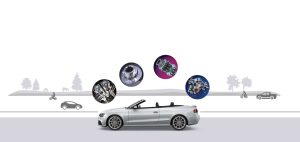Conductive Hearing Loss
Within the list of the types of hearing loss, the first one under limelight is the conductive hear loss. The word conductive is referring the point that there is some problem with the conduction of the sound toward the ear.
The conductive hearing loss is actually the problem of the inner ear along with the cochlea. The type also involves the issues in the ear canal, eardrum along with the middle ear. However, there is no harm to the auditory nerve in the conductive hearing loss. The overall loss is caused by the bad conduction of the outer sound to the ear.
Symptoms of conductive hearing loss
The symptoms of the loss are almost common in each person. However, the reasons may vary which causes conductive hearing loss. The level of the loss may also vary from person to person. Firstly, know about the common symptoms of conductive hearing loss.
- Most of the time the individual who is suffering from conductive hearing loss may complain about muffed sound
- There are some changes that person feels the sound coming from a large distance
- There may be some rare cases of feeling of numbness in the outer ear.
Causes of the conductive hearing loss
The causes of conductive hearing loss are most common in each person suffering from this loss.
- Most of the time the infection within the outer or middle ear becomes the cause of conductive hearing loss
- Complete blockage due to the ear wax is another major reason for this loss
- Deterioration of the ear bones can also because
- Otosclerosis also causes the conductive hearing loss
- The hole within the eardrum or damaged eardrum causes the hearing loss
- Absence of the outer ear or sometimes the absence of middle ear structures
As you read about the causes, some of these are easy to cure. Therefore, the conductive hearing loss is a temporary income case. However, it can be the permanent one depending on the cause. Luckily, the success of the medical management and foresthills audiology is helping the people. Foresthills audiology is serving people with ear machines to cope with conductive hearing loss.
Otoacoustic Emissions
Within the list of the types of hearing tests, which are performed by foresthills audiology, is Otoacoustic emissions. In the process, the sound is produced by the certain vibrations of the hair cells within the inner ear. The process uses the probe, which is fitted with the microphone along with the speaker to stimulate the cochlea. The probe is used to measure the exact response to the sound vibrations.
The person with normal hearing is going to produce the emission. While on the other hand, there will be no sound when a person is facing hearing loss. It mostly happens when the loss exceeds the limit from 25 to 30 decibels.
The test also determines if there is any blockage within the ear canal. The excess fluid in the middle ear and identifying the damage can also be done by this specific test. For the newborn, the hearing screening program by foresthills audiology includes the Otoacoustic Emissions test.
There are chances that the professional combines two or more tests to perform the hearing loss test. The condition can be rare when a person is reflecting multiple types of hearing loss.
Bone Conduction Testing
Moving ahead within the list of the types of hearing tests, the next one arranged by foresthills audiology is bone testing. Bone conduction testing is used to measure the response of your inner ear, which is generated at different sounds.
The professionals will place the conductor at the backside of the ear, which will keep sending vibrations through the bone. The direct vibration conduction towards the inner ear is the main thing within the entire process. The overall testing is much different as compared to the other traditional testing versions.
Pure Tone Testing
The foresthills audiology performed the pure tone testing to identify the type of loss. The process uses air conduction to measure the overall ability to hear the sound. The process gives the hearing results by testing at different volumes and pitches.
In the process, the person is asked to wear the headphones while sitting in a certain position within the designed booth. By the means of headphones, different sounds are passed into the ear of the person. The effects of the sounds are noticed and even asked from the person to generate accurate results. During the process, the person has to raise the hand when he hears any sound. If no raising the hand, then the button option can be used for the person’s quick output. An audiogram is used to note down all the results
Compare the results of the bone conduction testing with the pure tone. If the results are not similar to each other, the foresthills audiologist will determine the type of hearing loss.
Acoustic Reflex Testing
The test is used to measure the muscle contraction within the middle ear. It is actually identified to determine the actual location of the hearing problem. The same testing process also identifies that which is the type of hearing loss from which a person is suffering.
Speech Testing
The type of testing is there to measure the speech reception within the person. The foresthills audiology explained that our hearing is directly connected with the speech when we are asked to react to sounds.
The speech testing can be performed in a noisy area and as well as at some quiet place. The Measuring one can identify the speech and background noise separation.
Tympanometry
Furthermore, the foresthills audiology is there to perform the Tympanometry test. The purpose of the test is to check the movement of the eardrum in the presence of the air pressure. The movement is identifiable when there is proper fluid along with the wax buildup. The eardrum perforations and tumors may also affect the movement of the eardrum.
Auditory Brainstem Response
It is the testing, which is there to determine the type of hearing loss from which a person is suffering. Most of the time, the test is used when there are symptoms of Sensorineural hearing loss. A person has to wear headphones and have to react to some certain sound. The person with the headphone should be sitting in a designed booth. In the testing, the audiologist determines the person’s response to the sound and then note down at the audiogram.
Website: http://foresthillsaudiology.com/
Our Address: 110-11 72nd Avenue Forest Hills,NY 11375






More Stories
Rapid Mental Health Insights With AI-Powered Paper Summaries
Unveiling Trenbolone Acetate: A Comprehensive Guide to Its Impact on Bodybuilding
Secure Your Ideas with Safenote